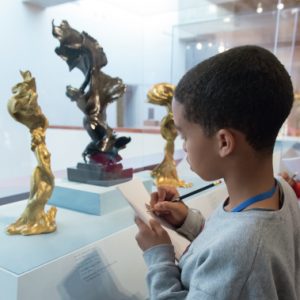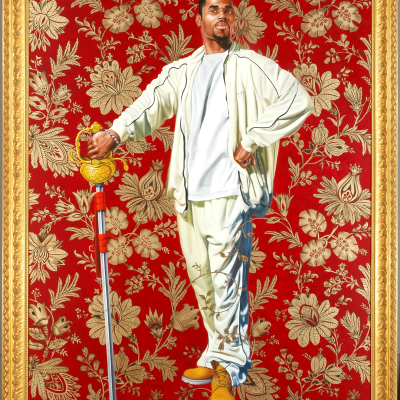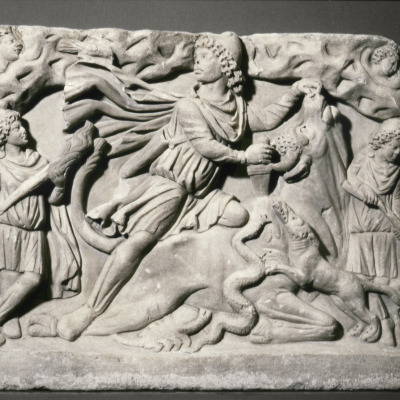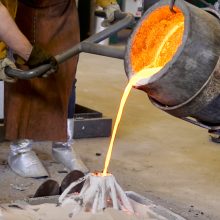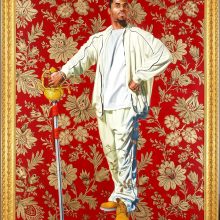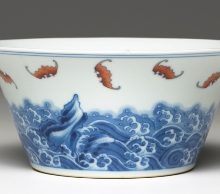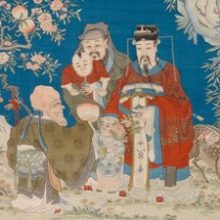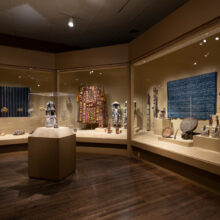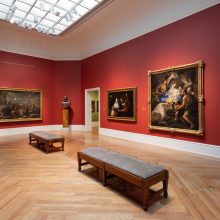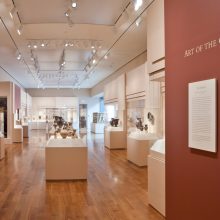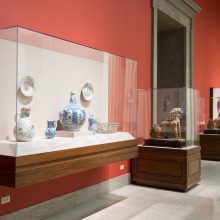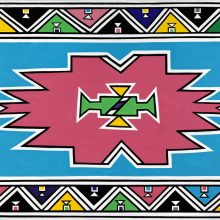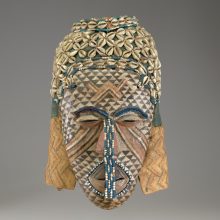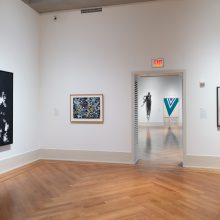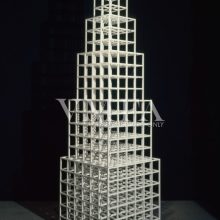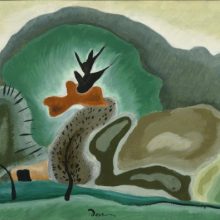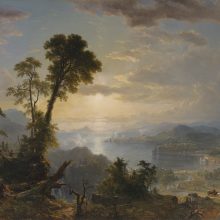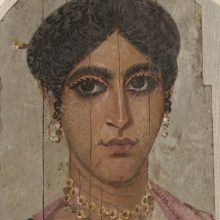Taking the time to think creatively and critically about ritual objects from the past can help reinforce the facts we subsequently learn about them. At first glance, the form of this object may lead to speculation and multiple ideas about its use. The study of its surface with its distinct green patina might spark curiosity about both its age and the material with which it was made. Consideration of the repeated patterns that adorn its surface might lead to questions about the culture to which its maker belonged.
In fact, the label tells us, this item is a bronze bell from the Zhou dynasty in China (1046-256 BC). Knowing this, we can begin to build on ideas and questions about its fabrication, imagine how it might sound if played, and wonder about its original physical context.
Music was an integral part of ritual ceremonies and royal banquets during the Zhou dynasty. Bells with hangers were used as percussion instruments in the 6th century BC. This bell was either played as a solo instrument or as one of a set of bells cast in different sizes to create a complete musical scale. During the performance, the bell would be suspended on a wooden rack. A player would use one or two wooden mallets to strike the bells, producing solemn yet beautiful music.
